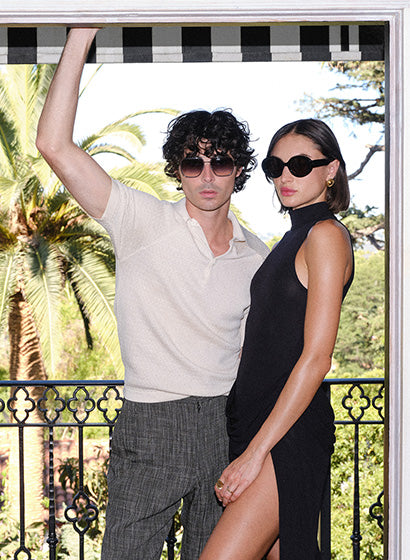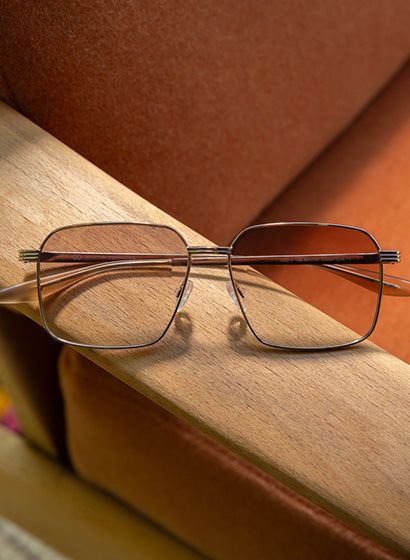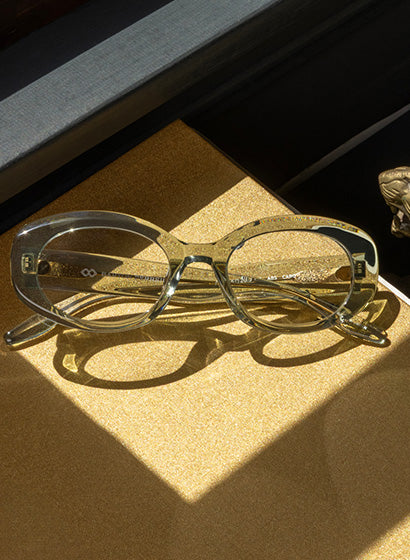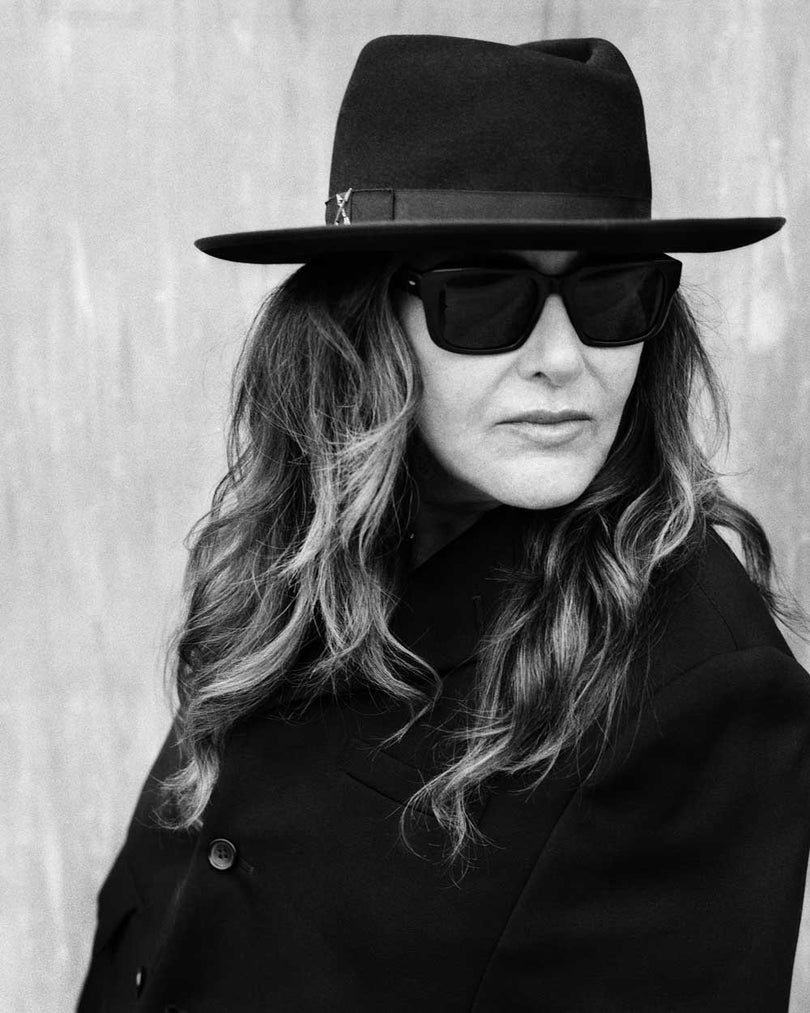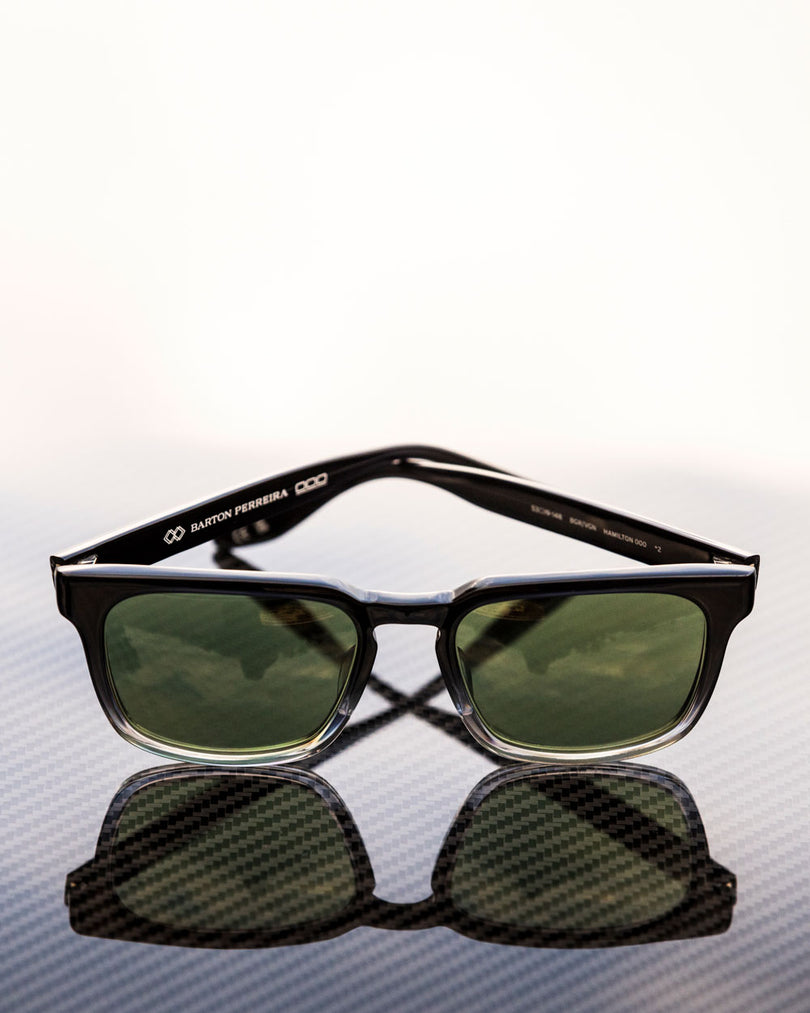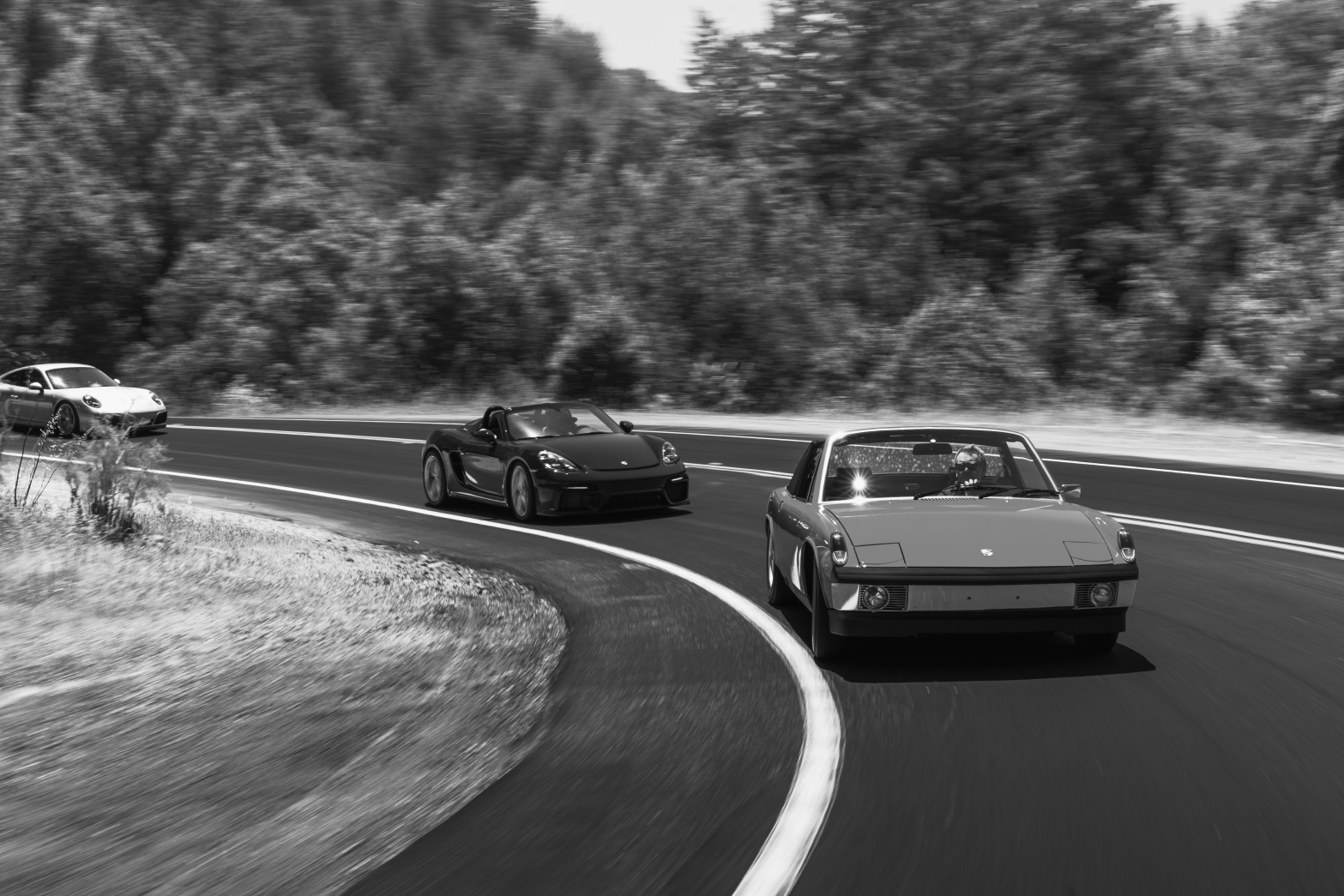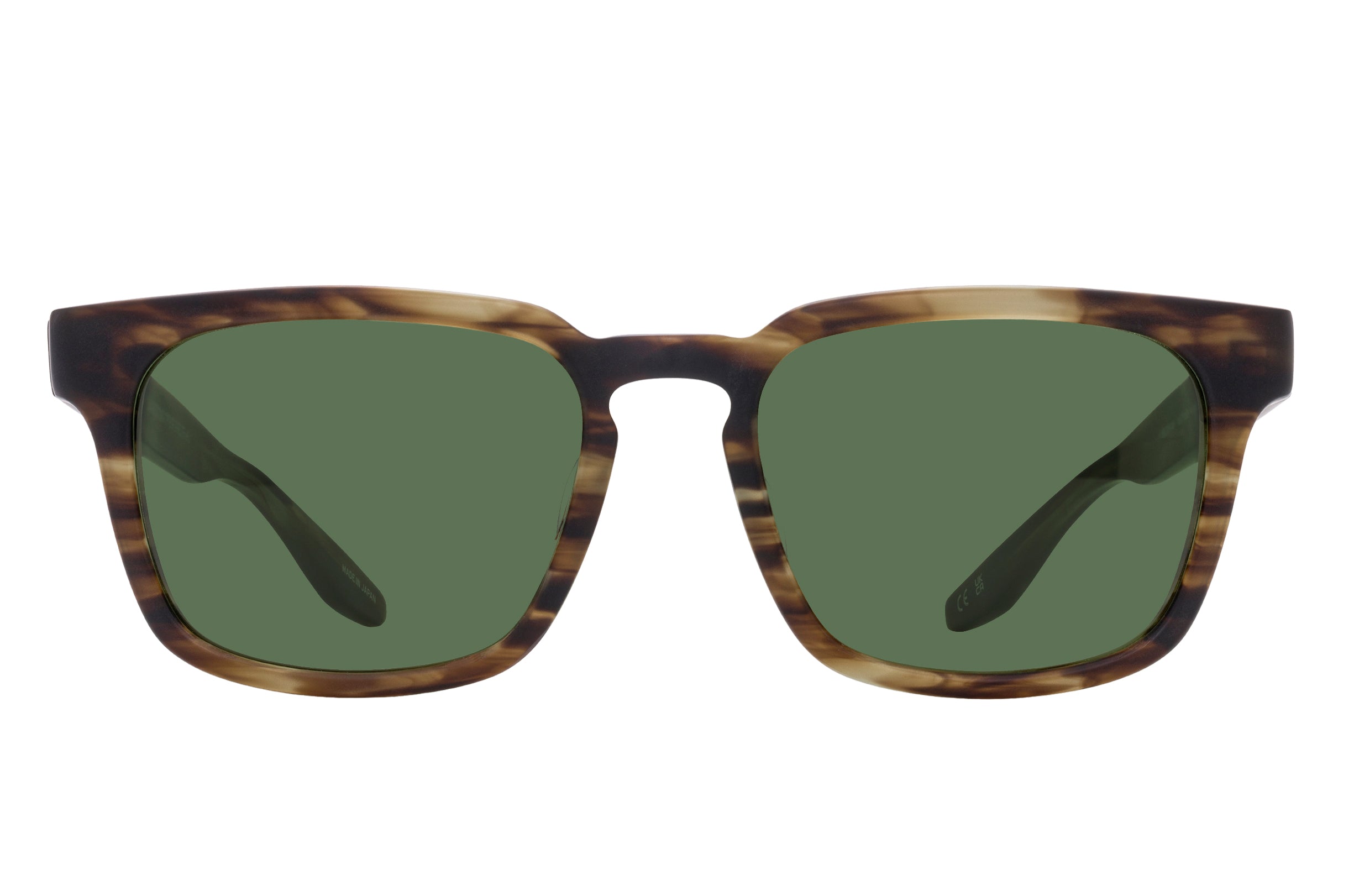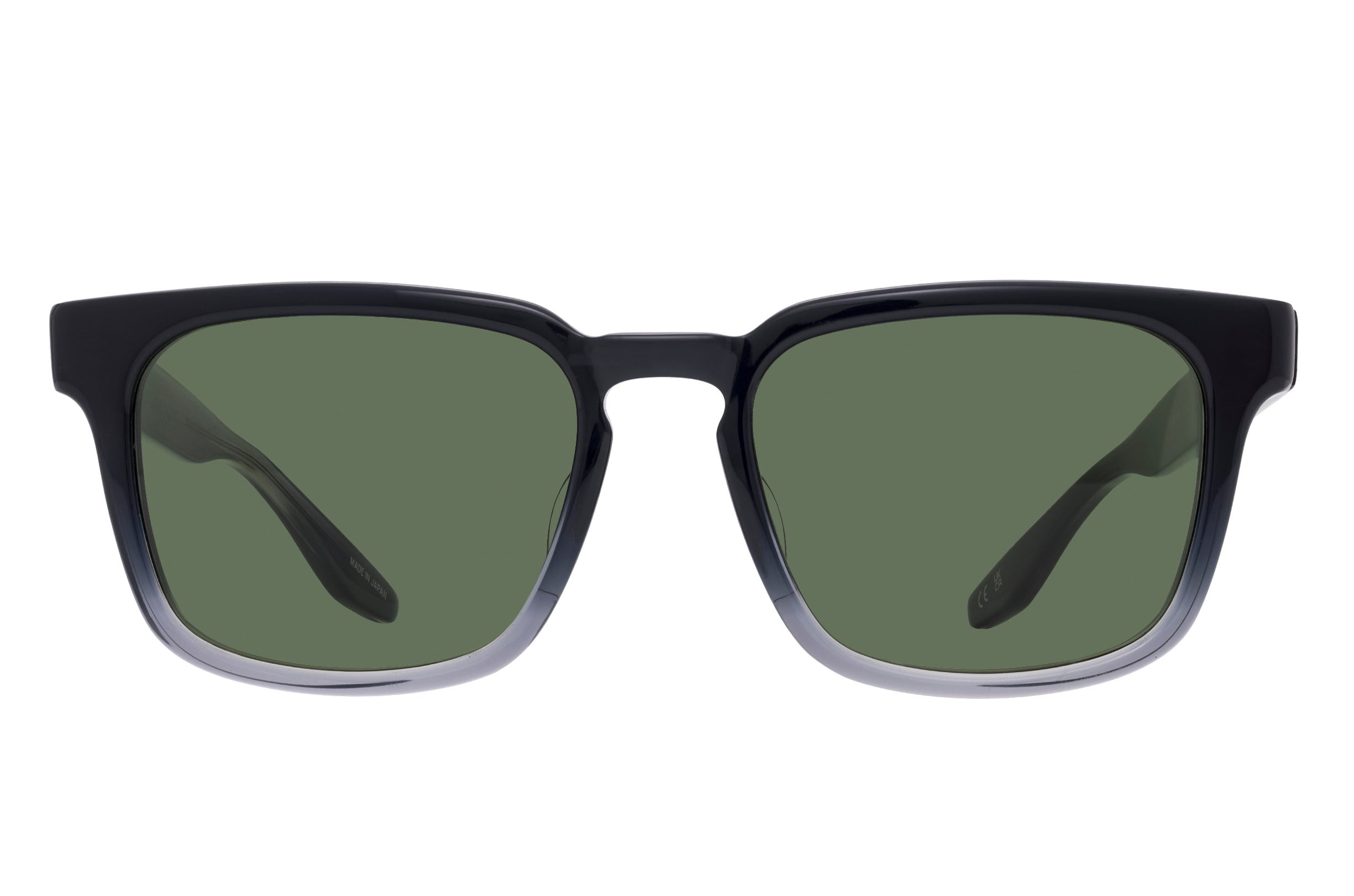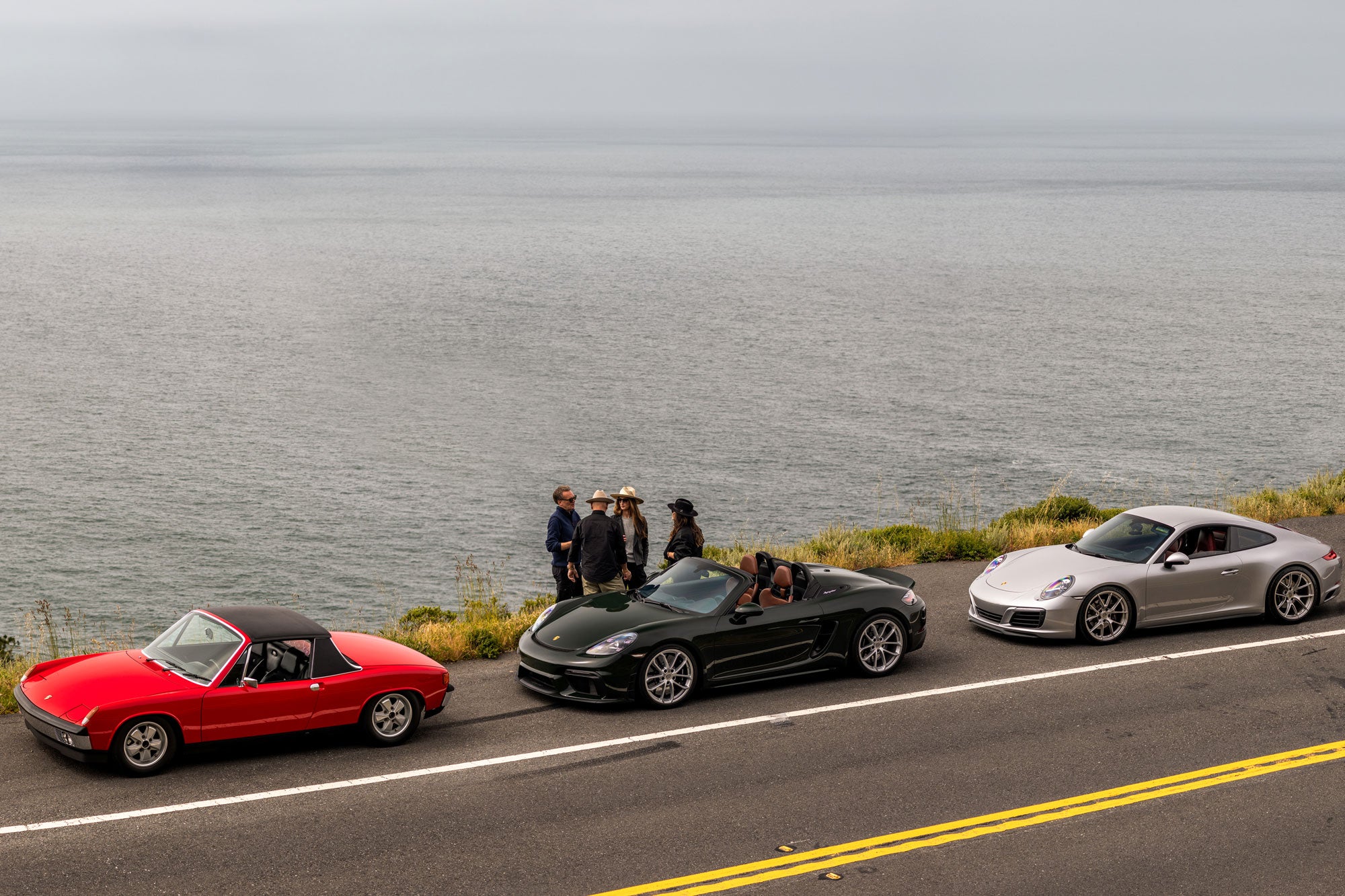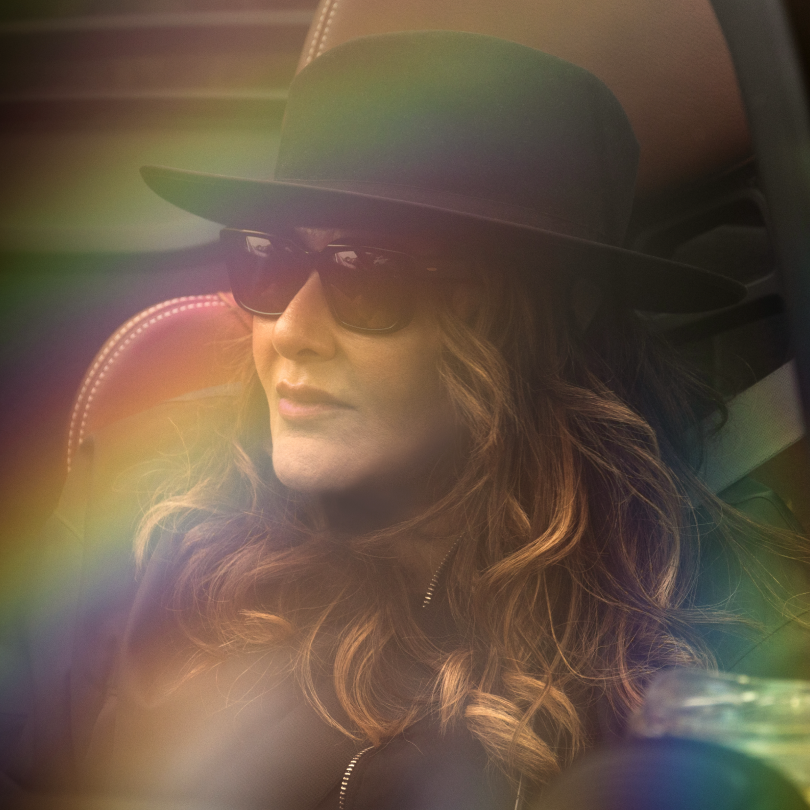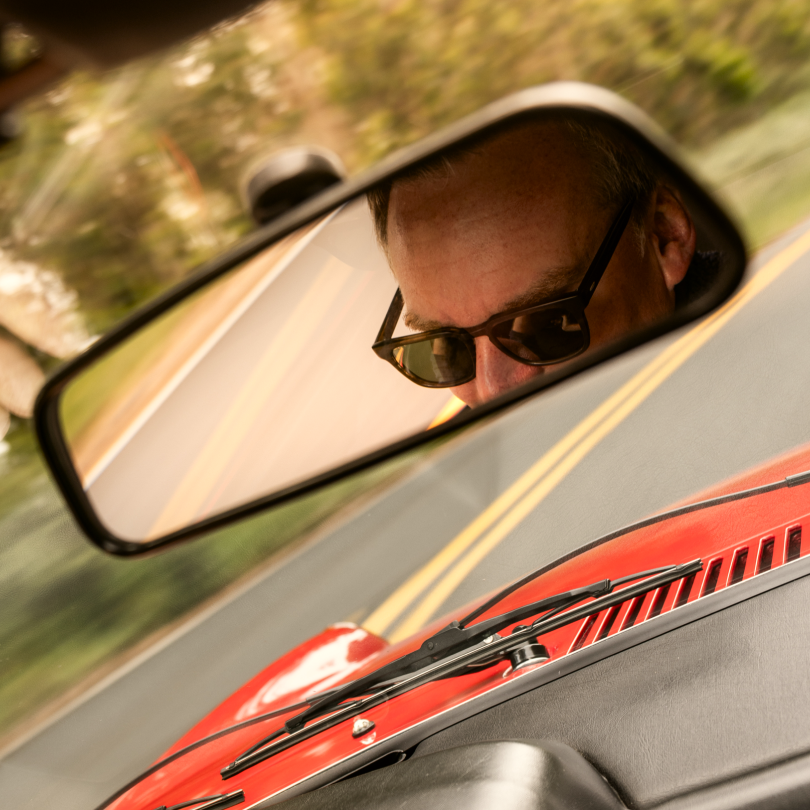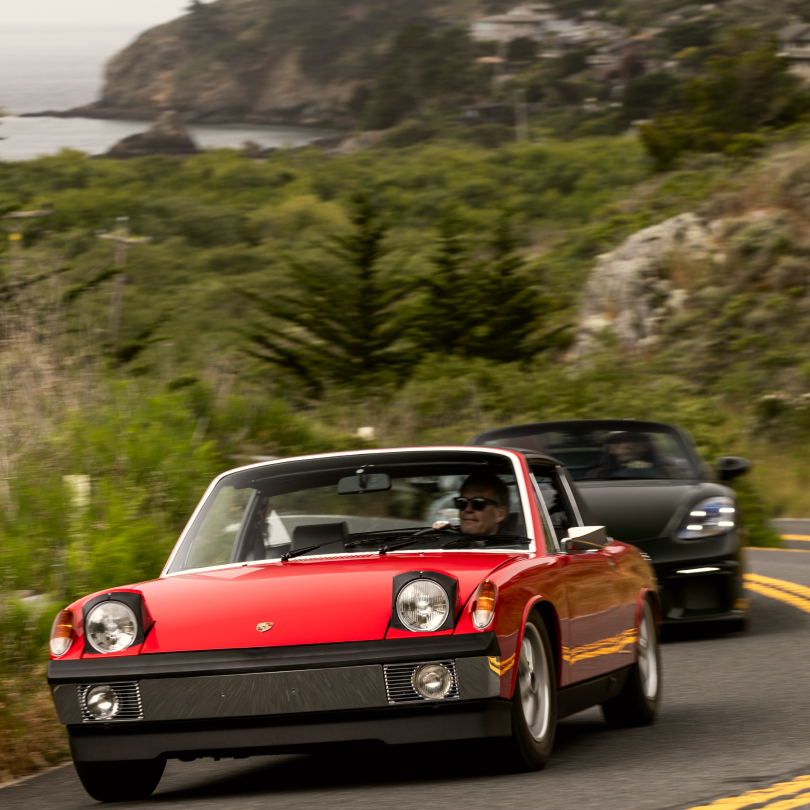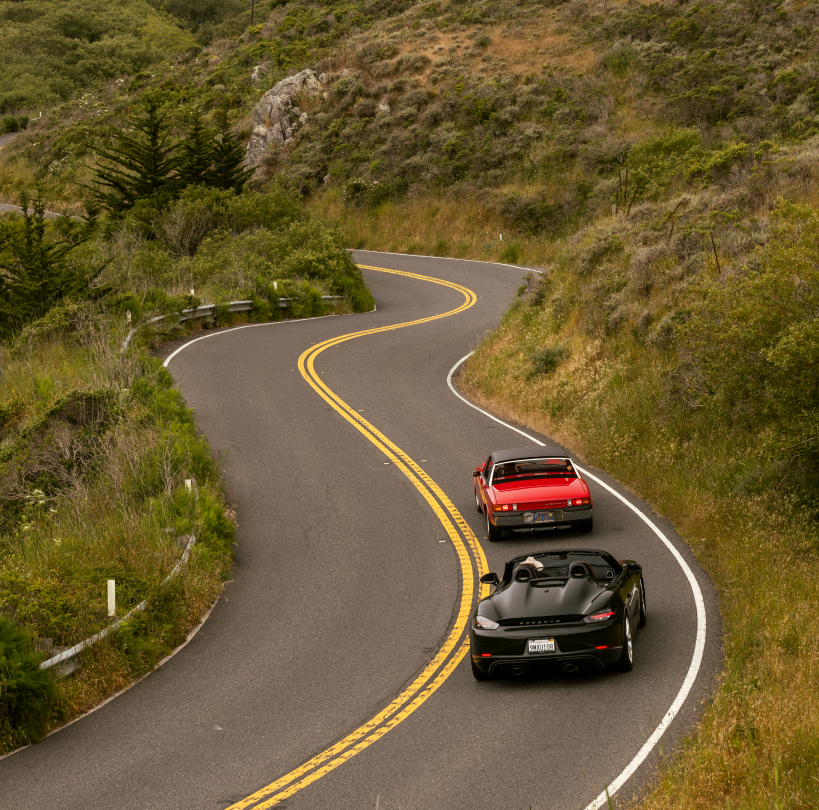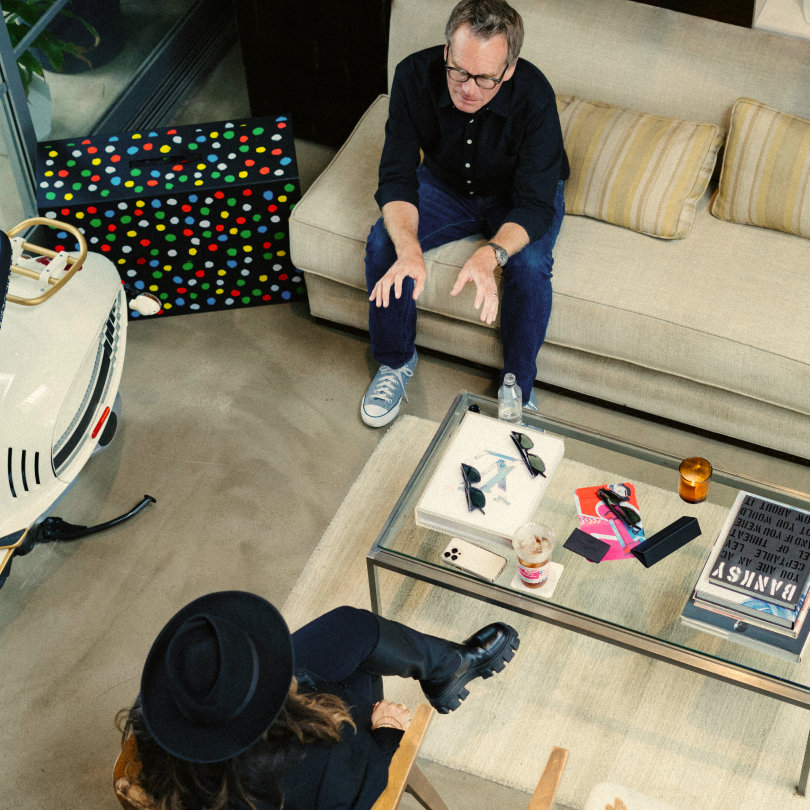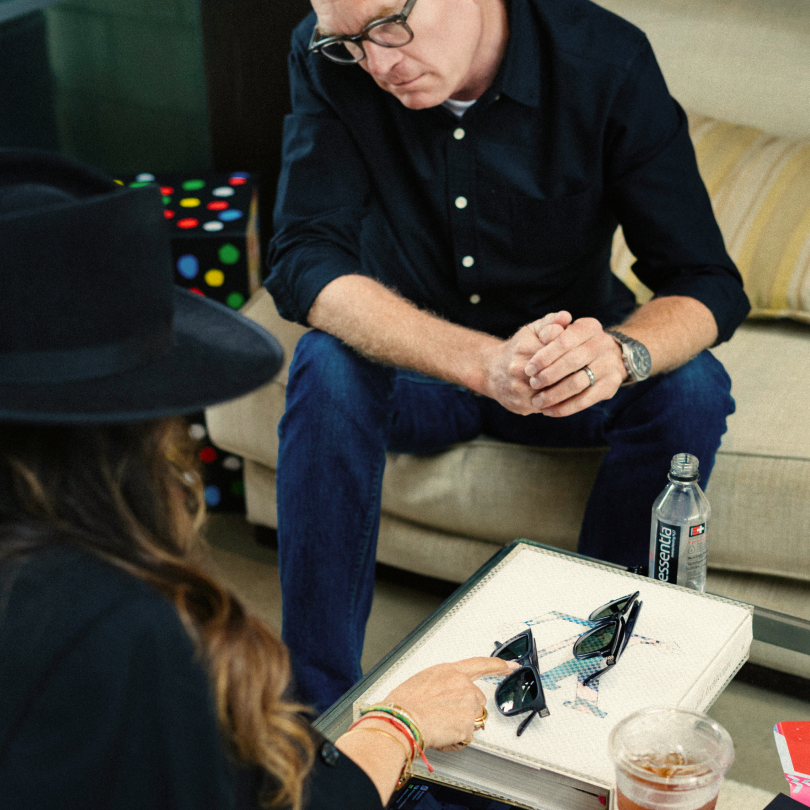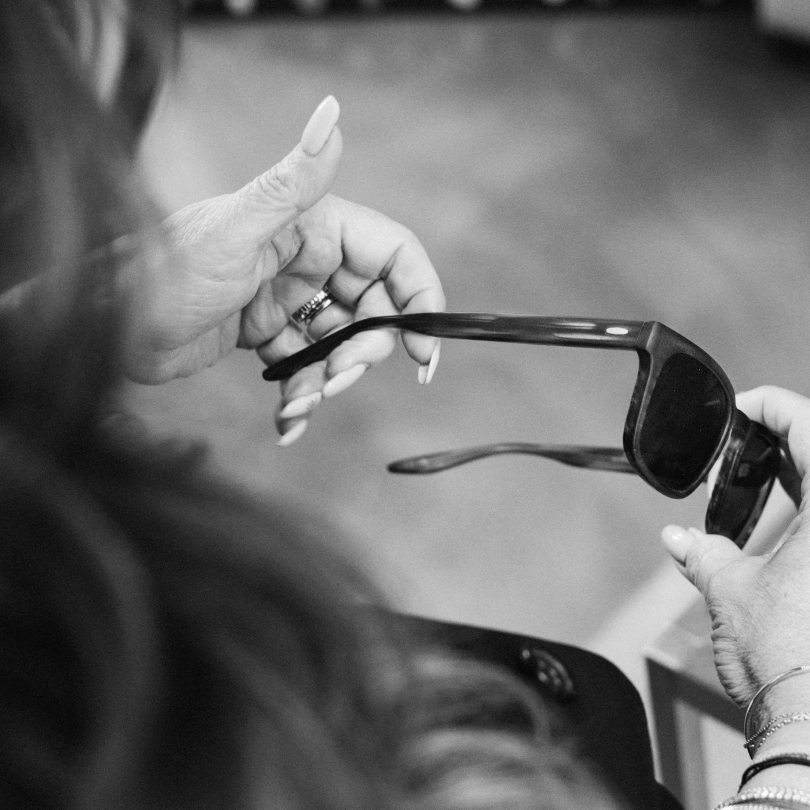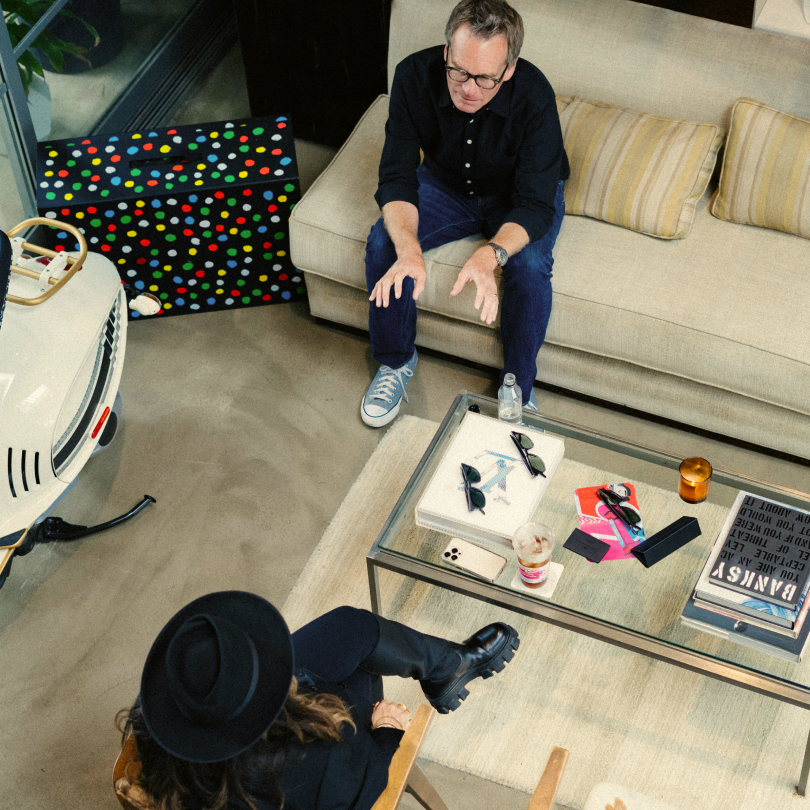
Designed in California, Crafted in Japan.
DRIVEN DAILY
Barton Perreira and 000 Magazine, the renowned Porsche-focused publication, have teamed up to create a limited-edition sunglass for their audiences who value both design and functionality.
This collaboration unites the expertise of Barton Perreira co-founder Patty Perreira and 000 co-founder Pete Stout, both passionate about Porsche and design.Drawing inspiration from their California roots and passion for car culture, they designed bespoke colorways for the stylish and functional HAMILTON sunglasses.
Handcrafted in Japan, this limited-edition unisex design features mineral glass lenses and acetates in both matte and shiny finishes. It provides superior sun protection and exceptional clarity, elevating the driving experience to a new level of luxury.
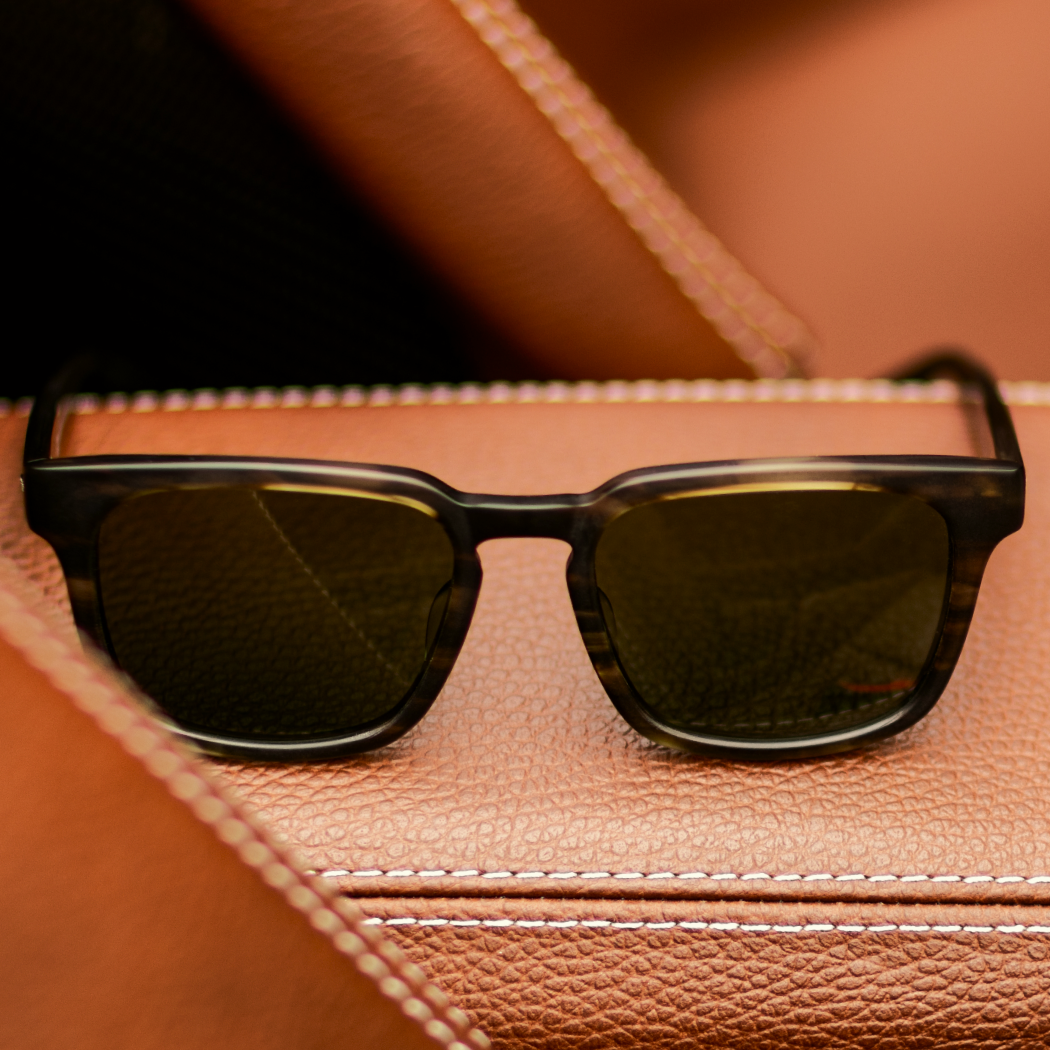
Limited Edition
HAMILTON x 000
Designed in California, crafted in Japan, this limited edition rectangular sunglass design boasts a sleek, structured silhouette that flatters any face shape with its iconic keyhole bridge. Three exclusive Japanese acetate colorways provide a stylish yet versatile look, while non-tech glass lenses ensure optimal clarity during a backcountry rally or your daily commute.
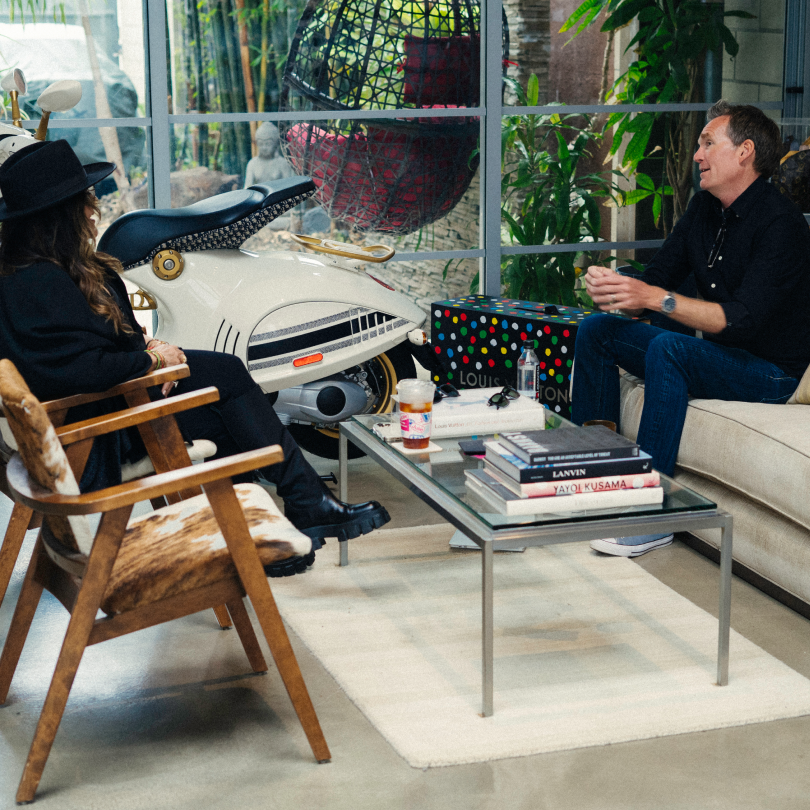
Founder Perspectives, and Personal Insights
Design Conversations
Interview and Story: Pete Stout / Founder and Editor 000 Magazine
As any serious driver knows, your ability to see the road ahead is everything. So perhaps it was only a matter of time before renowned eyewear designer Patty Perreira and longtime editor-in-chief Pete Stout met. Both were born and raised in California, both faced challenges early in life, and both went on to push the envelope in their respective fields. Patty co-founded Barton Perreira, an independent eyewear brand that dared to view things differently, while Pete co-founded 000, an independent quarterly magazine focused on Porsche. Both are keenly interested in matters of design as well as Porsche sports cars, and the conversation that follows took place in Patty’s studio in sunny Southern California—not long before they met for a drive on the wind-swept Northern California coast.
Stout: What was some of your earliest cognizance of design?
Perreira: Growing up, I didn’t have a lot of money to buy the trendy clothes at the mall. So when I went shopping, it was going to a fabric store to look for remnants. The fun part for me was going through the patterns. Or, at a thrift shop, I might like this sleeve but that body. I was very involved in designing my clothes for school, which my mom made. Back then, I was embarrassed about it. Now I realize it was amazing to be able to create things only I had.
Stout: When did you start thinking about eyewear?
Perreira: I started wearing glasses when I was twelve, and there were all these glasses and sunglasses at thrift stores that were so cool. That’s when I started collecting. They made me feel smarter, and gave me a kind of confidence—they gave me a different look, and I liked that.
Stout: I can identify with that. I didn’t need glasses until recently and didn’t dwell on style. I was after function, because vision is critical when I’m testing cars. Then we met and I saw your work—the details, the faceting, the quality. When I tried a pair you picked out for me, that was it.
Perreira: They’re just so great on you. The color, the fit, everything. They don’t take away from your look. They add, which is amazing.
Stout: I felt that the moment I looked in the mirror. What I didn’t tell you that day is I went through five or six surgeries and a decade of orthodontics to correct a cleft palate. Like a lot of people born that way, I’ve spent most of my life avoiding cameras. But your glasses changed things, doing for me exactly what those glasses you collected as a kid did for you.
Perreira: I love that story! It’s incredible to think that something you created can make such a positive impact on how people feel. But I get it—when I started wearing glasses as a 12-year-old, I remember loving the way I felt when I wore them.
Stout: It’s funny—we put eyeglasses on to see better, but we end up framing ourselves a little differently, too…
Perreira: I think that’s how we’ve gotten so many clients to fall in love with wearing glasses again—and to have multiple pairs. They realize they want different looks.
Stout: I have to admit I viewed glasses as a necessary evil, which is how a lot of people think about the automobile. But you’re into cars, too. When did that start?
Perreira: I had two older brothers who were into cars and motorcycles, and my stepdad had a Corvette Stingray. My brothers were always tinkering with cars, especially my older brother. He had an Austin Healey, and a 1950s Chevy truck that was totally custom.
Stout: When did you get into Porsche?
Perreira: I wasn’t about Porsche until I met my husband in the 1980s. He was a Porsche guy, and he bought a 911 SC. It was this amazing olive green, and that was my first experience riding in one. Fred taught me how to drive a stick in that car, so it was the first Porsche I ever drove.
Stout: And you went on to get a 911 of your own…
Perreira: Yes, a 996 Carrera coupe. Metallic black over this beautiful, soft red interior.
Stout: Basalt Black on Boxster Red, probably—a rare and striking combination. I have fond memories of those first water-cooled 911s, but love that an air-cooled 911 formed your first memories in a Porsche. Those offered a unique lens, with a tall windshield, thin A-pillars, and a low hood. You saw a lot of the road ahead, and a lot of blue sky too. My first experience in a Porsche came in a ’73 914 with maybe 80 horsepower. It was my older brother’s, then mine. Driving it in the hills over Berkeley, I felt like I was doing exactly what I was made to do. Every now and then, we find something that helps us be a little more of who we are—something that someone, or a group of someones, made. So let’s talk about how you make eyewear. When you say “design first,” what do you mean?
Perreira: I’ll have an idea of what I want something to look like as far as shape, color, thickness, beveling, that sort of thing. Then it’s like, Okay, how can we balance it? How are we going to make this comfortable? Because there’s nothing worse to me than an ill-fitting pair of glasses. A lot of people have to wear their glasses all day, from the time they wake up to when they go to bed. So you want it to fit properly. For example, I like to keep things really light and thin behind the ears because I want it to be comfortable.
Stout: How many different designs of BP are currently available?
Perreira: We have about 115 active styles in our current collection, and each style has multiple colorways.
Stout: You’ve talked about the shapes of human faces. How many are there?
Perreira: Seven. Round, square, oval, oblong, diamond, heart, pear.
Stout: How does someone figure out what shape their face is?
Perreira: They say to do it by standing in front of a mirror with lipstick and then drawing the shape of your face on the mirror. Then you know.
Stout: Did you know there is a “Porsche face?” It was established by a 1939 VW competition car called the 60K10, a Porsche design also known as the Typ 64. Where the VW Beetle’s hood was high and its headlights were low, the 64 was the opposite—so the driver saw more of the road ahead while tall front fenders positioned the headlights better and marked out the corners of the car on the way into a turn. Porsche’s first 356s looked a lot like the 64, and then the 911 carried that face forward…
Perreira: It’s amazing that you point that out, because it’s where form meets function. There was a reason for that. When did your interest in cars, and design, begin?
Stout: My father was a mechanical designer, my mother a floral designer—so an interest in design was always there. As for cars, I’ve been into them for as long as I can remember. Everything stopped when a new car magazine arrived. I had no idea I’d go on to work for one, or start one, but that old 914 changed my path. And if there’s one thing I’ve learned from focusing on Porsche in my work, it’s that less really is more.
Perreira: I say that all the time. Always, when I describe Barton Perreira, it’s a less-is-more aesthetic.
Stout: What does that look like when it comes to eyewear?
Perreira: I’m not that into logos, and there are subtleties in design I appreciate much more—such as the beveling on acetate to adjust the way light hits that first point. Or a softer keyhole bridge, like we did on the 000 Sunglass.
Stout: It’s funny you mention faceting. One of the first things that struck me about your work was the precision of the faceting and all of the subtle surfacing. Where are your frames made?
Perreira: They’re 100% Japanese.
Stout: Interesting. Japan keeps coming up when it comes to precision—some of the best forged road wheels come from Japan, for example. Something else I love about this acetate is its reveal, where you see what I’d call the chassis in each arm.
Perreira: I call it a chassis as well. It’s referred to as a core wire in the eyewear industry, which gives structure, strength, and support to the design.
Stout: I love it because it’s subtle—you have to catch just the right angle to see it.
Perreira: It’s almost like a ghost. There are transparent light spots that allow you to see through.
Stout: We decided to use matte tortoiseshell for two of three pieces in this collaboration, and there’s a throughline with Porsche. One car that made a huge difference in Porsche’s history was the 1993 Boxster concept car, which ended up on my dorm room wall. It had tortoiseshell interior elements, which were beautiful and totally unexpected. When you and I started talking about tortoiseshell, I thought about a conversation with Harm Lagaaij, who headed Porsche’s design studio back then. We were at Daytona in 2004, and he had these old tortoiseshell sunglasses with this lovely patina. Harm said they had grown cloudier with time—and the matte brown we chose for these BP sunglasses reminds me of them.
Perreira: I love these matte tortoiseshells, which feature a striation pattern rather than the typical spotty tortoise, giving them a more updated aesthetic compared to a vintage look. I love that we paired it with really beautiful mineral glass lenses.
Stout: It’s funny what color can do—the matte brown feels familiar where the matte gray feels new to me. How do you achieve that finish?
Perreira: The Japanese acetate has a higher polish rate—but the matte finish we get from it is more beautiful, too. It also holds its shape better, and just feels so good. Wherever it’s touching the face, it’s…I don’t know how to describe it…it’s a matte finish, but there’s a smoothness to it that makes it feel like a gloss.
Stout: Will it lose its matte-ness with time?
Perreira: Maybe behind the ear if you tend to use a lot of hair or skincare products—the matte finish might start to become a little bit shiny or patinated.
Stout: I don’t mind a little patina. What I can’t deal with is poor design. I had some expensive sunglasses that kept sliding down my nose. It was hugely distracting, particularly when driving…
Perreira: Many brands design their frames with a heavier front and overlook balance, which is crucial for a proper fit. Achieving the right balance and proportion is essential. For instance, a thicker, more substantial temple tip can help counterbalance the weight at the front, while an adjustable core wire in the temple can ensure a custom, comfortable fit.
Stout: One of the things I love about BP eyewear is the lack of logos, and the focus on function. When we first talked about creating eyewear for drivers, we wanted to come up with something timeless and something anyone could wear—something that could be left in a car so they’re ready to go, whether you drive that car every day or only occasionally. A low bar, then, given how personal eyewear is! [Laughs] Yet Wayfarers come to mind. Are there others?
Perreira: Aviators are another. I love aviators—it’s an iconic, timeless style that I do in our collection each season.
Stout: When you start designing, where do you begin—the shape of the face or the eyewear?
Perreira: I start with the eyewear, but the face is always in my mind. It’s part of the fine tuning. For example, let’s say I want a thicker, “square” optical frame—but it’s never going to be completely square because our faces have curves. So I might give the top line a slight radius arc, because we have eyebrows, and it creates more harmony and balance when it’s on the face. While most eyewear designers create frames as standalone objects, I design them with careful consideration of the face’s anatomy.
Stout: Are you drawing by hand, or on a computer?
Perreira: It depends. We have a huge archive of shapes and details in the system, but if it’s something completely new, it starts with a very rough sketch.
Stout: Have you saved your sketches?
Perreira: Some, not all. Sometimes, it’s on a napkin or whatever I can find in the moment of inspiration.
Stout: How do fashion trends impact your work?
Perreira: I have to work so far in advance of trend reports, so I just focus on how my designs fit into your life and how they complement your look.
Stout: There’s a strong correlation to Porsche there. It rarely followed trends, and you rarely saw flourishes or unnecessary details. With most cars, you can usually tell them by their era. The 911 is something else.
Perreira: It never left. It’s timeless design.

